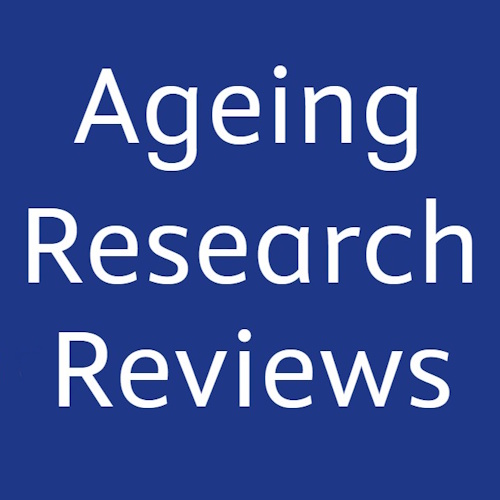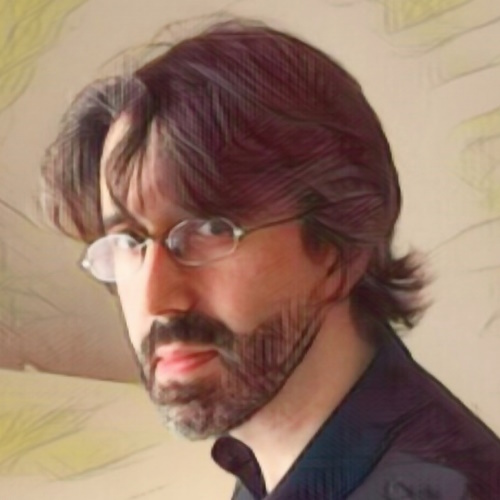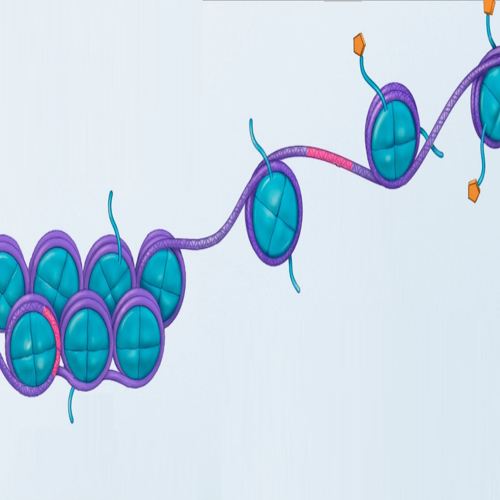In recent years, science has made impressive strides in understanding how we age. One of the most intriguing breakthroughs in this field is the concept of epigenetic clocks—molecular tools that seem to reveal our biological age more precisely than the number of years we have lived.
What Are Epigenetic Clocks?
Epigenetic clocks are tools that use chemical modifications to DNA, primarily methylation, to determine a person's biological age. Unlike chronological age, which is simply the number of years since birth, biological age provides insight into how well our body systems are functioning. The concept revolves around DNA methylation—small chemical tags that attach to DNA and regulate gene expression without altering the DNA sequence itself.
Methylation levels at specific sites within the genome change predictably as we age, and scientists have identified certain clusters of these sites that can serve as reliable biomarkers for ageing. The most famous of these clocks is Horvath’s multi-tissue clock, which uses methylation at 353 CpG sites to predict age across a wide range of tissues. But these clocks do more than track ageing; they reveal insights into developmental processes that stretch across an entire lifetime.
Discovery of the Epigenetic Clock
The discovery of epigenetic clocks by Steve Horvath marked a turning point in ageing research. His research showed that methylation patterns across many tissues could serve as an accurate predictor of age. Horvath’s clock works on almost all tissues in the human body, with remarkable accuracy, with some exceptions like the breast, which appears older, and the cerebellum, which appears younger.
What's fascinating about Horvath's clock is its applicability across the entire life span, from early embryogenesis to old age. This broad utility suggests that these methylation clocks may be tightly connected with developmental processes—a clue that ageing may be intertwined with our growth and development. If the ticking of an epigenetic clock begins in the womb, might ageing be more about the culmination of developmental sequences rather than just random damage accumulation?
Methylation Clocks and Developmental Ageing
The traditional view of ageing tends to center on the idea of damage accumulation—mutations, wear and tear, oxidative stress, and cellular breakdown. However, there is a growing body of evidence suggesting that ageing may not simply be a result of deterioration over time but could be closely tied to the same developmental processes that helped us grow and mature. This new view of ageing is referred to as the programmatic theory of ageing.
The programmatic theory of ageing proposes that many of the changes we see as ageing are a continuation of developmental processes. In other words, the genetic programs that once promoted growth and development do not switch off; instead, they continue to function, sometimes inappropriately, in older age. The consequence? Ageing as a natural, programmatic extension of the same biological systems that once drove us to thrive.
Evolution, Pleiotropy, and the Ageing Process
To understand the programmatic theory of ageing, we need to look at an important concept from evolutionary biology known as antagonistic pleiotropy. This theory, first proposed by George Williams in 1957, suggests that certain genes have multiple effects—some of which are beneficial early in life and others that are detrimental later on.
An example of this might be a gene that enhances tissue growth in early development, which is crucial for survival and reproductive success. However, in later life, the same gene could lead to unchecked tissue growth, potentially contributing to cancer. Natural selection favors these genes because they promote early survival and reproduction, even if they lead to problems down the line when their impact on evolution is minimal.
The programmatic theory takes this concept further, suggesting that some developmental processes that were useful when we were young simply continue without stopping. This is what researchers like David Gems and João Pedro de Magalhães refer to as quasi-programmed ageing. The idea is that ageing is a non-adaptive continuation of biological programs that become detrimental after their initial usefulness has ended.
Polycomb Proteins and Developmental Control
A key player in understanding the link between development and ageing lies in a group of proteins known as polycomb group proteins. These proteins are responsible for maintaining the suppression of developmental genes that are no longer needed as we age. The universal mammalian clock, a recent breakthrough that works across different mammalian species, has shown that many methylation sites associated with ageing are linked to the areas where polycomb group proteins bind.
Polycomb proteins typically help to silence genes that are essential during development but not later in life. However, as we age, these proteins might lose their ability to control these developmental programs effectively. This loss of control could lead to the activation of developmental genes at inappropriate times, driving the ageing process. In simpler terms, the machinery that once kept our development in check may eventually wear out, leading to detrimental effects on our health.
A Universal Clock Across Mammals
One of the most exciting aspects of epigenetic clocks is their cross-species applicability. Researchers have found that a universal mammalian clock can predict biological age in a variety of species, from rodents to whales. This means that the underlying mechanisms of ageing might be conserved across all mammals. In one remarkable study, methylation-based models were even able to predict a species' maximum lifespan with striking accuracy.
This cross-species conservation suggests that the ageing process is deeply rooted in evolutionary biology and may be controlled by a fundamental biological timeline—a developmental sequence that begins at conception and ends at death. The differences in lifespan among species may largely be a matter of how quickly this clock ticks. For example, mice age roughly 20-30 times faster than humans, yet the basic processes governing ageing seem to be the same.
Understanding Ageing Through Developmental Gerontology
The convergence of developmental biology and gerontology leads us to an emerging field known as developmental gerontology, or "devo-gero." This new field aims to understand ageing not as a separate life stage but as an integral part of an organism's overall development. By studying ageing through this developmental lens, scientists hope to identify the mechanisms that control the rate and nature of ageing.
The programmatic theory suggests that ageing involves the continuation of two types of developmental processes:
Onto-developmental processes, which involve the initial creation of a mature organism from a zygote. These processes emphasize precision and fidelity to ensure proper growth and organ formation.
Maturo-developmental processes, which are more about adaptability and maintaining the organism during adulthood. These processes are less about precision and more about adapting to environmental stresses, repairing damage, and modulating biological functions.
The interplay between these two processes helps explain why ageing manifests differently across different tissues and organs. For example, tissues that undergo constant renewal and adaptation—like the skin or the gut—might age differently from more static tissues, such as the brain.
Trade-Offs: Developmental Fidelity Versus Plasticity
One of the hypotheses introduced in this new field revolves around a trade-off between developmental fidelity and plasticity. During the early stages of development, the body prioritizes fidelity—the precision of developmental programs to ensure the proper formation of organs and tissues. However, once adulthood is reached, adaptability becomes more crucial for survival.
This shift towards adaptability or plasticity is thought to be facilitated by changes in chromatin accessibility, which allows genes involved in adaptation to become more active. But as time goes on, this increased plasticity could lead to a loss of control over developmental programs, resulting in age-related diseases.
For instance, the increased plasticity seen in breast tissue might make it more susceptible to cancers in later life. The idea is that the same plasticity that once allowed tissues to adapt and function optimally can, over time, lead to instability and disease.
Reimagining Lifespan: The Developmental Sequence Hypothesis
An intriguing hypothesis presented in recent research suggests the presence of an invariant developmental sequence that spans from conception to death. This sequence is thought to include both ontogenetic and maturo-developmental phases. According to this view, the rate at which an organism ages depends on the speed or "play rate" of this developmental sequence.
This concept helps explain why some species, like mice, have such short lifespans compared to others, such as whales or humans. The basic developmental sequence is the same, but the rate at which it progresses differs. In other words, longevity might be more about the speed of our biological clock than about how much damage we accumulate.
Towards a Better Understanding of Ageing
Understanding ageing through the lens of developmental biology provides a more nuanced view of why we age and what controls our lifespan. The idea that ageing is an extension of the developmental processes that once helped us grow and thrive offers a fresh perspective on why our bodies eventually fail.
By integrating evolutionary theory with developmental biology, researchers can begin to understand the "why" behind the ageing process. The developmental gerontology framework suggests that ageing is not just an inevitable accumulation of damage but rather a programmed extension of our growth and maturation—a process that natural selection has not actively optimized beyond reproductive age.
What Does This Mean for the Future?
The implications of understanding ageing through the lens of epigenetic clocks and developmental biology are enormous. If ageing is, in part, a continuation of developmental processes, interventions could potentially target these processes to slow down or even reverse aspects of ageing.
One area of active research is cellular reprogramming. Scientists have found that reprogramming cells to an embryonic-like state can reset their epigenetic age, essentially making old cells young again. This process involves reversing some of the epigenetic changes that occur with age, and it holds promise for regenerative medicine. Imagine being able to rejuvenate ageing tissues or even entire organs by simply resetting the epigenetic clock.
Another exciting development is the possibility of targeting the pathways that regulate polycomb proteins and other developmental regulators. By understanding how these proteins lose control over time, researchers may be able to find ways to extend their effectiveness, thereby delaying the onset of age-related diseases.
Challenges and Questions for the Future
Of course, much remains unknown about the role of epigenetic clocks in ageing. While we know that these clocks are accurate predictors of biological age, the underlying mechanisms that drive the ticking remain poorly understood. Are these clocks merely passive reflections of the ageing process, or are they active drivers of ageing?
Another question revolves around whether ageing can be fundamentally separated from development. If ageing is a continuation of developmental processes, does this mean that the key to understanding ageing lies entirely within developmental biology? And if so, how do we manipulate these processes without causing harm? The interplay between beneficial and detrimental effects—the very essence of antagonistic pleiotropy—makes it challenging to alter the ageing process without unintended consequences.
Conclusion
Epigenetic clocks offer an intriguing glimpse into the biology of ageing, suggesting that our biological age is deeply intertwined with the same developmental processes that made us who we are. The idea that ageing is not merely about damage accumulation but also about the continuation of developmental programs opens up a new way of thinking about ageing and longevity.
The emerging field of developmental gerontology offers hope for new interventions that could one day slow down or even reverse the ageing process. By understanding the developmental basis of ageing, we may find ways to improve not just lifespan but healthspan—the period of life spent in good health.
The journey to understand ageing is far from over, but with every discovery, we move closer to unlocking the secrets of longevity. As we continue to explore the intersection of developmental biology, epigenetics, and ageing, one thing becomes clear: ageing is not just about growing old. It's about continuing to grow, adapt, and evolve—right until the very end.
The study is published in the journal Ageing Research Reviews. The research was led by David Gems from University College London and João Pedro de Magalhães from University of Birmingham.








